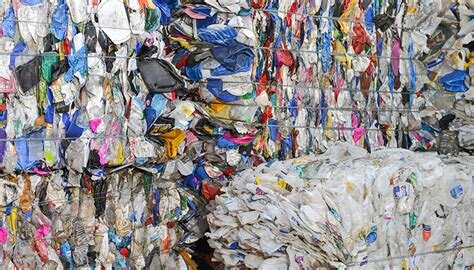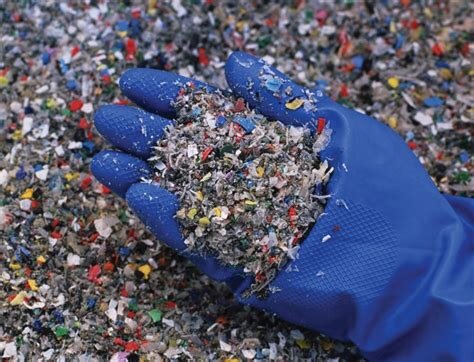Reduce, Reuse & Recycle
Most, if not all educational systems struggle to inform you of what Reduce, Reuse & Recycle are, and why they are important. Many who are curious or become environmentally conscious celebrate and embrace them as a way of life. In essence, they are a way of providing stress relief for the Earth in a manner that slows an exhaustion of resources. This then begs the question, what are these words?
Reducing
“To diminish in size, amount, extent, or number”. This definition is quite obvious but regularly neglected in terms of everyday life. Reducing does not challenge the quantity in which foods and liquids that you consume, but rather, diminishes packaging in which goods come in. Take for example, shampoo. We are all used to purchasing a name brand shampoo from the store such as Pert, Dove, Pantene, etc. But what you don’t realize is that you are receiving a concentration of water & soap (80/20) within a large plastic container. The action of reducing is buying shampoo that contains relatively 100% soap, 0% water, and no plastic packaging. How is this done? Cold formed soaps.
There are plenty of other examples of reducing, and it only takes a matter of a little bit of information and a choice at the grocery store. To learn more on how you can reduce your product footprint and why you should, go to: Reducing and Reusing Basics | US EPA or Reducing Waste: What You Can Do | US EPA
Reusing
“To use again especially in a different way or after reclaiming or reprocessing”, again another evident definition, but carries a deep meaning to how we go about consuming. A perfect example of reuse is purchasing products out of glass jars. Why do this? Because glass jars can be reused hundreds if not thousands of times. A glass jar can be reused in canning, storage, drinkware, decorations, and other fun DIY adventures.
Reusing is the key alternative to the fight of single-use (which doesn’t always have to be about plastics). You can house many products within your home that have nothing to do with plastic materials. For example, paper towels. There are many ways around paper towels such as rags and beeswax wraps. To gain a better understanding of reusing materials and read upon further examples, head to the link above or check this YouTube Video out: 100 THINGS TO REUSE OR REPURPOSE YOU HAVE TO TRY
Recycling
“To pass again through a series of changes or treatments”, and I promise this is the last read and regurgitate definition of this blog. Recycling and reusing are slightly different in which reusing will utilize a material as-found on the shelves of the store but as we established, can be used in many ways. Whereas, recycling takes that shelf material, and breaks that material down into its main components (cardboard to wood pulp). Once those components are separated and sterilized, they are reformed into another product. You can successfully recycle many types of materials such as wood products, metals, glass & some types of plastics. To learn more about recycling, how to recycle, and what steps there are to the process, go to: https://www.epa.gov/recycle
Why is Reducing, Reusing and Recycling Important?
That is a fantastic question that a lot of people have. It is best put into perspective by explaining it as a sustainable act. In a sense that it is important to preserve the fruits of the Earth for not JUST yourself, but for your children, their children and much more. Imagine the scale of complexity when you assume half of the world’s population (roughly 3.9 billion people) consumes 2 cardboard boxes, 15 grocery bags, 2 paper towel rolls, and 7 que-tips a week? The numbers in yearly totals are astronomical (5.3 trillion items head to a landfill, waterway, forest, or pocket of air near you). To get away from hypotheticals, about 4.5 pounds of trash (banana peels, frayed toothbrushes, busted electronics, plastic wrappers, greasy pizza boxes) is generated by the average American daily. All of these items mentioned can be reduced and/or reused (Reduce, Reuse, Recycle. Most of All, Reduce.).
Now picture a growing population that effectively will have an exponential growth in landfill area and a rapidly decreasing quantity of land due to product production supply & demand, sprawl from housing, global warming, agriculture and much more. Effective space will be bleak for your and my great great grandchildren (World population trends | Trends in Solid Waste Management).
This plays heavily into economics, geography, child labor, carbon emissions, fresh water usage, microplastics, birth defects, and birth/mortality rate fluctuations. For the interests of this blog’s length it is important that I emphasize that the lack of inference in detail is purposely placed to spike your curiosity in research. If I were to dive in on all of these issues, I might as well publish a series of books.
Reducing, reusing & recycling changes the way we value our goods and care for our materials. With an increased amount of these acts, we will see a less polluted world (Fact Sheet: Single Use Plastics). No bags in trees, straws in the ocean, tires hidden in the valleys and much more. With actions to reduce, reuse & recycle, big corporations will be forced to change into a more circular economic business model that cuts exhaustion of resources and enhances the quality of the product and services that come with it (Explaining the Circular Economy and How Society Can Re-think Progress | Animated Video Essay). Take for example, Patagonia. Patagonia sells their organic merchandise at a higher premium but with a recycling and refurbishing program, in which, if you damage your merchandise, they will fix it for you. Hence a circular model. This is an increase in quality and a decrease in materials produced.
A Common Misconception
Most people & corporations only talk about recycling! It is quite obvious why, because big corporations do not want to change their business models that they have already established. This is mainly based on the quarterly approach. Companies want to proclaim recycling is the most valued option, but I can tell you this is absolutely incorrect.
Recycling is the least effective means of providing a future for our fellow humans to come. Recycling for a decent percentage across all materials is vastly ineffective. For plastics, which head the game of single-use, is the worst leg of all recycling programs. Globally, 9% of the 8.3 billion tons of plastic has been recycled since production took off in the 1950’s (A Whopping 91 Percent of Plastic Isn’t Recycled). Of course there are many reasons for this problem, but until these recycling issues are addressed, it is best to play the game of reducing and reusing. Reducing and reusing essentially takes the stress off of the struggling recycling industry by downsizing the rate in which materials are produced and consumed (Rethink the way you recycle | Reduce, Reuse, Rethink ). There is also the fact that the recycling industry has a footprint as well and requires energy, materials, and water to sterilize and break down these products into their main ingredients. Whereas, reusing just uses what was already made for the same or another handy purpose.
The final nail in the coffin is that recycling leads to trash. In more ways than one. Recycling systems are so flawed that small items which proclaim to be recyclable, actually can’t be. They get lost in the process, fall through the cracks and most likely end in a waste bin. Then of course, there is a finite amount of times in which a material can be recycled. Without getting into material science, the materials themselves become weakened and lackluster for performance. This causes variability in the small percentage of products that make it through the preliminary sequence of sorting and sterilizing. Many products before they even reach the stage of breaking down into their elementary components, are tossed in the waste bin, because of these programs not being able to properly sterilize them. To learn more about the blunders of the recycling industry, check out the following video (Is Recycling Worth It Anymore? The Truth Is Complicated.).
What Can We Do?
Although a great deal of trash talking commenced above about the recycling industry, it does have great future upside. With the rise of Artificial Intelligence (AI), a beacon of light can be cast upon the industry. AI can and will make sorting these materials easier by working faster and more efficiently than a conveyor belt of workers (These Robots Are Using Artificial Intelligence To Sort Your Recycling | Forbes). There also comes the advancements in sterilization, education of recycling, and quantity decrease. EVERY person can make the difference by first REDUCING your consumer footprint, REUSING the products in which you currently have or plan to purchase, and then finally become informed on the ways in which you can RECYCLE at the highest level of effectiveness. If you live in the order of importance; 1. Reduce 2. Reuse 3. Recycle, we as a society will make Earth a better place to live for not just us, but for the future generations of humanity’s existence.
Appreciation Section
Thank you to all who have made the conscious decision to become more informed on Reducing, Reusing & Recycling! Also, thank you for your purchase or future consideration of our clothing line, Ecolite (See Below), which allowed you to consume this important message. We appreciate your continued support, so that we can inform and invoke change in our society for the benefit of humanity and future generations to come.
Listen to Everything STEAM Episode 6: Ditching Plastics
Additional Sources
FREE Furniture Pickup Services
Reduce, Reuse, Recycle, Repeat | Recycling Ideas For Kids | Toffee TV
10 Easy Ways to Save the Environment! Upcycling & Recycling Hacks by Blossom
Don’t Recycle, Upcycle: Why Future Sustainability Requires a Circular Economy
Responsible Consumption for Kids - The 3R Principle: Reduce, Reuse and Recycle






























